Amygdalin
Synonym(s):D -Mandelonitrile 6-O-β-D -glucosido-β-D -glucoside;D -Mandelonitrile-β-gentiobioside;Amygdaloside;Laetrile
- CAS NO.:29883-15-6
- Empirical Formula: C20H27NO11
- Molecular Weight: 457.43
- MDL number: MFCD00006598
- EINECS: 249-925-3
- SAFETY DATA SHEET (SDS)
- Update Date: 2025-12-19 17:28:17
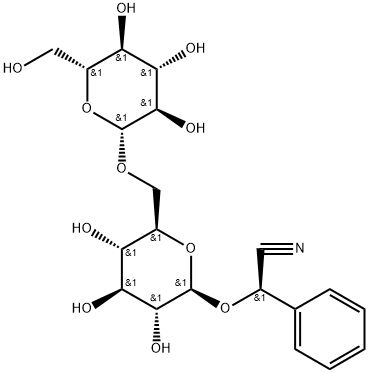
What is Amygdalin?
Description
Amygdalin is a cyanogenic glycoside that has been found in seeds from plants of the Rosaceae family and has diverse biological activities. It induces cell cycle arrest at the G0/G1 phase, decreases cyclin A and Cdk2 levels, and inhibits cell growth in UMUC-3, RT112, and TCCSUP bladder cancer cells when used at concentrations ranging from 1.25 to 10 mg/ml. Amygdalin (3 mg/kg) reduces the number of primary microtubules and microvessels in aortic rings isolated from rats with diabetes induced by streptozotocin . In vivo, amygdalin reduces triglyceride, total cholesterol, and LDL levels and aortic sinus plaque area in an LDLR-/- mouse model of atherosclerosis. It also reduces production of TNF-α, IL-1β, and IL-6, as well as neutrophil and macrophage infiltration, in bronchoalveolar lavage fluid (BALF) in a mouse model of LPS-induced acute lung injury.
Chemical properties
WHITE FINE CRYSTALLINE POWDER
The Uses of Amygdalin
Amygdalin, a cyanide containing glycoside, may be used as a substrate to identify, differentiate and characterize enzymes such as maltase(s), emulsin(s) and β-glucosidase(s).
The Uses of Amygdalin
antiinflammatory, experimental antineoplastic
The Uses of Amygdalin
A cyanogenic glycoside occurring in seeds of Rosaceae, principally in bitter almonds and peach and apricot pits. Some time ago it was said to be effective in the treatment of cancer, but controlled clinical trials repeatedly failed to confirm such claims.
What are the applications of Application
Amygdalin is cyanide containing glycoside used to characterize a variety of enzymes
Definition
ChEBI: An amygdalin in which the stereocentre on the cyanohydrin function has R-configuration.
World Health Organization (WHO)
Laetrile, which consists mainly of amydgalin, a glycoside extracted from the kernels of apricots, peaches and other fruits, has been available for over 30 years in preparations purporting to be beneficial in the treatment of cancer. Although there is no evidence that these are efficacious, preparations continued to be widely used and, until the late 1970s, they were considered to be harmless. However, oral dosage forms, which may be broken down in the gut to hydrogen cyanide, have subsequently been shown to be potentially lethal. This has resulted in restrictive regulatory measures in several countries.
General Description
This substance is a primary reference substance with assigned absolute purity (considering chromatographic purity, water, residual solvents, inorganic impurities). The exact value can be found on the certificate. Produced by PhytoLab GmbH & Co. KG
Biochem/physiol Actions
Cyanogenic glycoside that is a component of bitter almonds and apricot pits. There is no scientific evidence that amygdalin itself is an effective anti-cancer agent. Recent studies using β?glucoside linked to a tumor-associated monoclonal antibody to release cyanide at the tumor cell has shown significant cytotoxicity.
Safety Profile
Human poison by ingestion(infant data). Poison experimentally by ingestion. Anexperimental teratogen. Mutation data reported. Whenheated to decomposition it emits toxic fumes of NOx.
Purification Methods
D-Amygdalin recrystallises from water as the trihydrate, or from EtOH. It is present in bitter almonds. [Smith Chem Ber 64 1115 1931, Beilstein 17/8 V 188.]
Properties of Amygdalin
| Melting point: | 223-226 °C |
| Boiling point: | 563.27°C (rough estimate) |
| alpha | -38.5 º (c=4, H2O) |
| Density | 1.4474 (rough estimate) |
| refractive index | -40 ° (C=2, H2O) |
| storage temp. | Sealed in dry,Room Temperature |
| solubility | H2O: 0.1 g/mL hot, clear to very faintly turbid, colorless |
| form | Powder |
| pka | 12.69±0.70(Predicted) |
| color | White to Off-white |
| optical activity | [α]20/D 39±2°, c = 2% in H2O |
| Water Solubility | 83 g/L (25 ºC) |
| Merck | 14,597 |
| BRN | 66856 |
| Stability: | Hygroscopic |
| CAS DataBase Reference | 29883-15-6(CAS DataBase Reference) |
Safety information for Amygdalin
| Signal word | Warning |
| Pictogram(s) |
 Exclamation Mark Irritant GHS07 |
| GHS Hazard Statements |
H302:Acute toxicity,oral |
| Precautionary Statement Codes |
P264:Wash hands thoroughly after handling. P264:Wash skin thouroughly after handling. P270:Do not eat, drink or smoke when using this product. P301+P312:IF SWALLOWED: call a POISON CENTER or doctor/physician IF you feel unwell. P501:Dispose of contents/container to..… |
Computed Descriptors for Amygdalin
| InChIKey | XUCIJNAGGSZNQT-SWRVSKMJSA-N |
New Products
4,4-Difluoropiperidine hydrochloride tert-butyl 9-methoxy-3-azaspiro[5.5]undecane-3-carboxylate Indole Methyl Resin N-Isopropylurea N,N-Dicyclohexylcarbodiimide(DCC) MELDRUMS ACID 5-METHYLISOXAZOLE-4-CARBOXYLIC ACID Magnessium Bis glycinate Zinc ascorbate 1-bromo-2-butyne 2-acetamidophenol 9(10H)-anthracenone Erythrosin B, 4-Piperidinopiperidine 2-((4-morpholinophenylamino) (methylthio) methylene) malononitrile 2,4-dihydroxybenzaldehyde 3-(4-morpholinophenylamino)-5-amino-1H-pyrazole-4-carbonitrile Methyl 2-methylquinoline-6-carboxylate 2,6-dichloro-4-nitropyridine 4-Bromo-2-chlorobenzonitrile 2-(benzylamino)acetic acid hydrochloride 4-(tert-Butoxycarbonylamino)but- 2-ynoic acid 3,4-dihydro-2H-benzo[b][1,4]dioxepine 1-Phenyl-1-cycloprppanecarboxylicacidRelated products of tetrahydrofuran






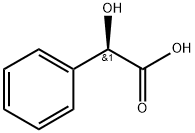
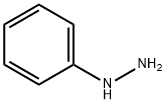
You may like
-
 Amygdalin, for HPLC 97% CAS 29883-15-6View Details
Amygdalin, for HPLC 97% CAS 29883-15-6View Details
29883-15-6 -
 Amygdalin CAS 29883-15-6View Details
Amygdalin CAS 29883-15-6View Details
29883-15-6 -
 Amygdalin CAS 29883-15-6View Details
Amygdalin CAS 29883-15-6View Details
29883-15-6 -
 Amygdalin 95% CAS 29883-15-6View Details
Amygdalin 95% CAS 29883-15-6View Details
29883-15-6 -
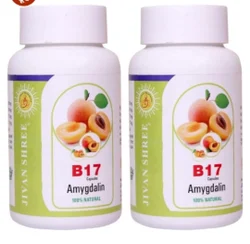 Vitamin B17, Greater than 99%View Details
Vitamin B17, Greater than 99%View Details
29883-15-6 -
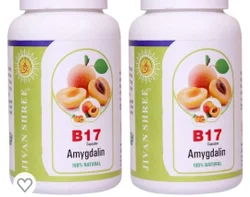 Vitamin B17 AmygdalinView Details
Vitamin B17 AmygdalinView Details
29883-15-6 -
 20677-73-0 (2,2-diethoxyethyl)methylamine 98%View Details
20677-73-0 (2,2-diethoxyethyl)methylamine 98%View Details
20677-73-0 -
 3-(4-(hydroxyamino)-1-oxoisoindolin-2-yl)piperidine-2,6-dione 98%View Details
3-(4-(hydroxyamino)-1-oxoisoindolin-2-yl)piperidine-2,6-dione 98%View Details
